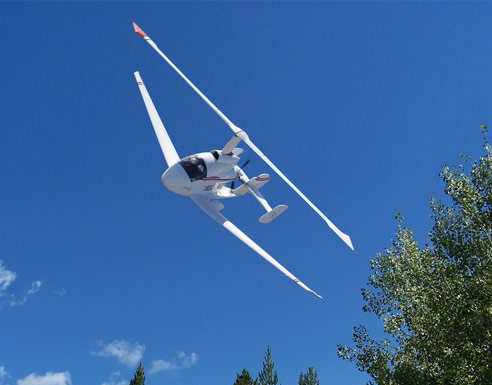Carter Aviation Trains New Pilots in PAV
August 31, 2015 (Wichita Falls, Texas) – Carter Aviation Technologies, LLC, a frequent exhibitor at EAA AirVenture Oshkosh, is moving forward with its plans to demonstrate its Slowed Rotor/Compound (SR/C) technology. “As part of the new focus to get the aircraft into production, it is critical that interested parties witness SR/C technology firsthand,” explained Jay Carter. Carter has been training a new crew to perform these demonstrations, which are finally underway. Recently, Carter hosted a major aerospace company which is evaluating the potential of SR/C technology in the marketplace and working toward an eventual decision to develop a product. “The aerospace company sent a gaggle of folks with them including individuals focused on technical aspects, business development, and of course test pilots,” an excited Jay said. “We flew a bunch of them in the aircraft with particular emphasis on jump takeoffs and a flyover with the 45-foot diameter rotor slowed to 112 rpm. The entire time with them went extraordinarily well.”
Carter has additional demonstrations planned for September and October and hopes to perform a nationwide tour beginning with flights to and around the Dallas/Fort Worth area, which is home to several major aerospace companies, sometime this fall. “We have been at this for 21 years! Although we have performed some demonstrations over the years, nothing we’ve done previously compares to what we just did and what we plan on doing,” Jay said. “This is the first time in the history of the company that we have put people from other companies or anyone other than a Carter Aviation employee in the aircraft for a flight.”
Carter suspended its flight test program last summer, but companies interested in seeing the aircraft fly as well as getting their pilots trained to fly it provided the impetus to return to flight. “We knew all along that it would be difficult to be successful with our aircraft parked and not flying, but our ability to fund that part of the business comes and goes,” Jay said. “We needed a little bit of time to rest and reflect combined with a kick in the pants from outsiders to get back with the program.” So, if you see a rotorcraft overhead, but cannot hear the rotor, it might be a CarterCopter.

